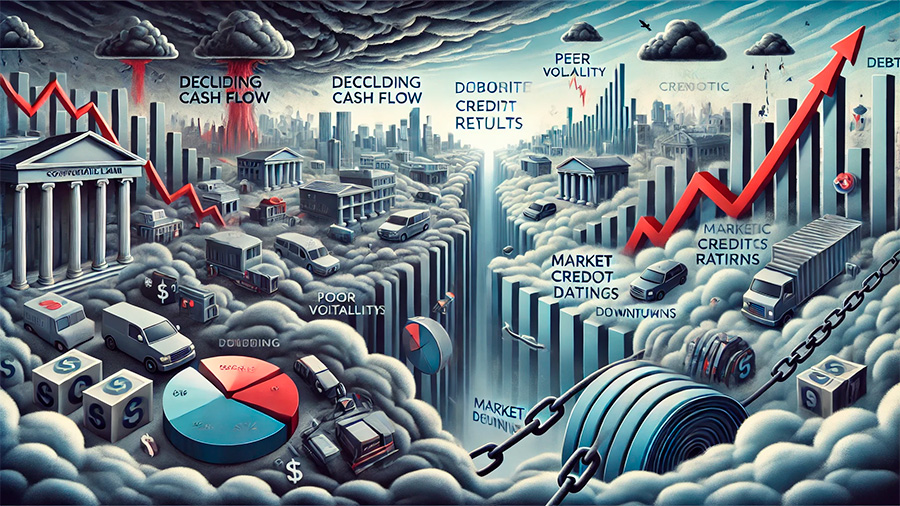Validating and implementing credit risk models requires a structured approach to ensure their accuracy, compliance, and reliability. Institutions need to focus on comprehensive model validation, including independent reviews, accurate data collection, benchmarking, and stress testing. Regular monitoring and adherence to regulatory standards further ensure the robustness of these models, enabling financial institutions to effectively manage credit risk. By following these best practices, institutions can maintain strong, reliable credit risk models that improve risk management and operational efficiency.
How Can Financial Institutions Effectively Validate And Implement Credit Risk Models?
To effectively validate and implement credit risk models, you need a structured and thorough approach. Here’s how you can ensure your credit risk models are robust and reliable:
- Model Validation: You should rigorously validate your models by assessing their accuracy, reliability, and integrity. Review the assumptions, methodologies, data sources, and overall implementation to ensure everything meets predefined criteria and regulatory requirements.
- Independent Review: It’s essential to conduct independent model validation. Have a separate team or external consultants review the models to ensure objectivity and thoroughness.
- Data Collection and Validation: You need to ensure that the data used for your models is accurate and validated. Collect data from reliable sources and verify its integrity to improve the accuracy of your model predictions.
- Benchmarking and Stress Testing: You should compare your models against external models or industry standards and test them under extreme but plausible scenarios. This helps you identify weaknesses and ensures your models perform well under different conditions.
- Regulatory Compliance: Make sure your models adhere to regulatory requirements and guidelines. Stay updated with regulations from bodies like the ECB or OCC and ensure compliance with these standards.
- Performance Monitoring: Regular monitoring of your model’s performance and stability is crucial. Ongoing assessment helps verify that your models predict accurately and remain stable over time.
- Documentation and Continuous Improvement: Thorough documentation of the development, implementation, and validation processes is essential. Continuously improve your models by incorporating feedback and new methodologies.
- Model Risk Management: Implement a robust model risk management framework. Systemically oversee your models to manage and mitigate operational risks effectively.
All things considered, by rigorously validating your models, ensuring compliance, and continuously monitoring and improving them, you can maintain robust and effective credit risk models.

What Are The Common Factors Influencing The Probability Of Default For Corporate Loans?
The probability of default (PD) for corporate loans is influenced by several common factors. You need to evaluate these key aspects to better manage your loan portfolio.
Firstly, a borrower’s financial stability is crucial. You should examine their cash flows, debt levels, operating margins, and liquidity. Strong financial health suggests a lower PD. Additionally, a solid credit history with timely repayments and no defaults can significantly reduce the PD.
Industry and economic factors also play a vital role. You might notice that the economic environment, industry health, and macroeconomic indicators like GDP growth and inflation impact PD. Borrowers in industries that are prone to economic cycles or downturns usually have higher PDs. The presence of collateral can lower PD as it provides you with security for the loan.
External credit ratings from agencies like S&P and Moody’s offer valuable insights into the borrower’s creditworthiness, thus influencing PD. Lastly, regulatory and legal compliance is vital as changes in regulations can increase or decrease the PD.
Lastly, by understanding and evaluating these factors—financial stability, credit history, industry and economic factors, collateral, external credit ratings, and regulatory compliance—you can better assess credit risk and manage your loan portfolio effectively.
How Do Concentration And Country Risk Impact Credit Risk Modeling Strategies?
Concentration and country risk significantly impact how you should model credit risk.
Concentration risk occurs when you have a large exposure to a single borrower or group of borrowers, making potential losses higher if these entities default. You can manage this by setting limits and using diversification tools to spread risk.
Country risk involves uncertainties when investing in specific countries due to political instability, economic conditions, or currency issues. This risk is especially high for developing nations and can lead to significant financial losses. You should consider sovereign ratings and country risk premiums in your models to account for these variations.
To develop robust credit risk models, you need to diversify your portfolio to mitigate concentration risk. Evaluate country-specific risks like political instability and economic health using tools and sovereign ratings to inform your lending decisions.
Finally, to protect against defaults and financial losses, you should balance your credit risk modeling by addressing both concentration and country risks.

How Has The 2008 Financial Crisis Shaped Current Credit Risk Modeling Practices?
The 2008 financial crisis dramatically reshaped credit risk modeling practices. You might recall how financial institutions relied on quantitative models that overlooked the complexities and systemic risks in products like mortgage-backed securities. The crisis exposed these limitations, leading to a shift towards models that now account for macroeconomic factors, systemic risks, and rare, severe events (tail events).
Regulatory responses, such as Basel III and the Dodd-Frank Act, mandated greater transparency, stress testing, and scenario analysis. These regulations forced banks to adopt more robust risk models, increasing their capital and liquidity buffers to mitigate future risks.
Here’s how current practices have changed:
- Enhanced Stress Testing: Regular stress testing evaluates how well your bank can withstand economic shocks.
- Greater Transparency: Increased disclosure requirements give you better insight into risk exposures.
- Inclusion of Macroeconomic Indicators: Modern models consider broader economic conditions and potential systemic risks.
In closing, the 2008 crisis led to significant improvements in credit risk modeling by incorporating stress tests, ensuring transparency, and factoring in macroeconomic indicators. These changes aim to prevent another financial meltdown and better protect your financial interests.
What Are Best Practices For Developing Reliable And Insightful Credit Risk Models?
To develop reliable and insightful credit risk models, you should follow several best practices:
First, use high-quality and relevant data. Ensure your data is complete, accurate, consistent, and timely. Cleanse, transform, and analyze it to fit your model’s needs.
Next, focus on feature selection. Choose features that capture a comprehensive view of the borrower’s creditworthiness. Include traditional data like credit history and income as well as alternative data sources.
You should also select the appropriate modeling techniques. Depending on your credit risk problem’s complexity, consider logistic regression, decision trees, neural networks, or statistical models.
Model validation and robustness checks are crucial. Split your data into training and testing sets to evaluate performance. Perform robustness checks and use stress testing under extreme conditions to see how your model performs.
Regularly review and test your model assumptions and perform sensitivity analysis. Understand how models react to various shocks and scenarios to identify and fix weaknesses.
Updating your data and models regularly is essential. Reflect current market conditions and the latest information by integrating real-time data and performing regular data quality checks.
Ensure interpretability and explainability. Use techniques like feature importance analysis and partial dependence plots to gain stakeholders’ trust and meet regulatory requirements.
Apply stress testing and back testing. Stress test your models to see how they perform under adverse conditions, and back test to compare predicted outcomes against actual results.
Overall, following these practices will help you create credit risk models that are accurate, reliable, and adaptable to changing market conditions.

